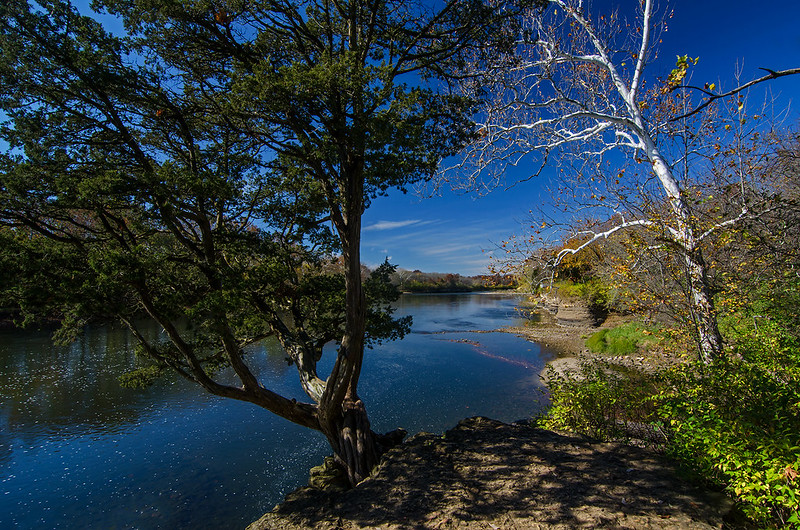
No trip to Illinois' Matthiessen State Park is complete without a hike through the lower dells; however, the water levels can rise too high to allow access to this area. Exploring the canyon's two waterfalls, and several small caves are the highlights.
At the far, blind end of the canyon, 45 foot tall Cascade Falls feeds the stream at the base of the canyon, and runs to the Vermilion River a few hundred meters away. Near the falls, some small caves dot the canyon walls, and most are large enough to walk into. One in particular opens up to a great view of the falls.
Access to this part of the cave is a bit slippery in winter, but not dangerous. During high water periods, one must return to the original entrance, however in winter, the pond around the falls is frozen and walking on it is possible.
The stone walls are soft sandstone, easily carved by running water - and visitors throughout the decades. Names and even faces can be seen on the canyon walls, reminders of who visited before us.


































